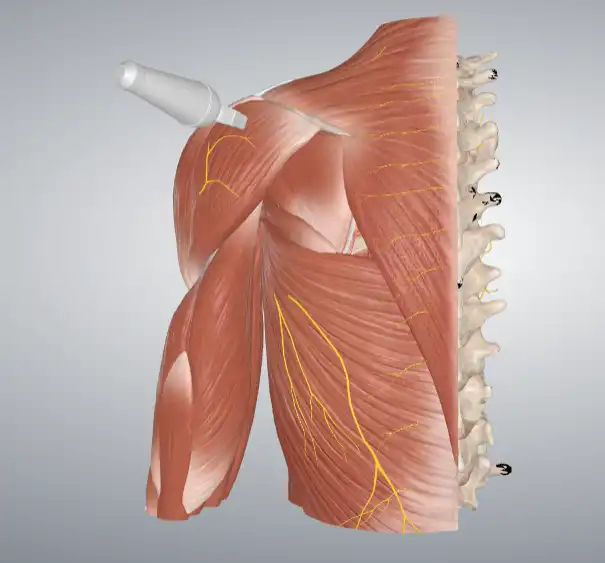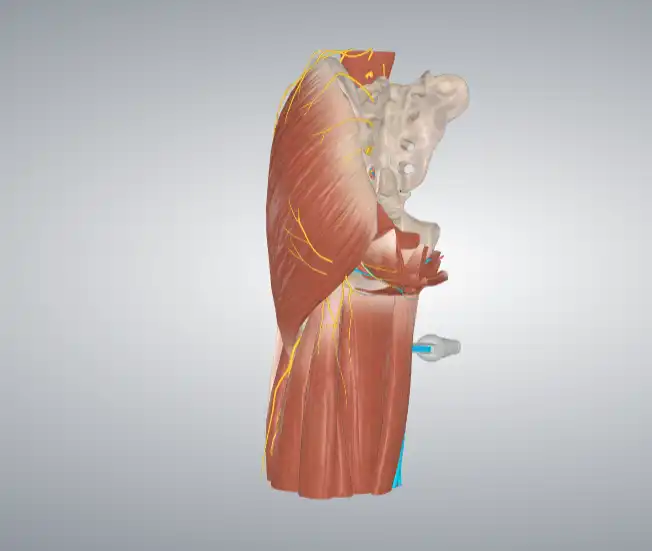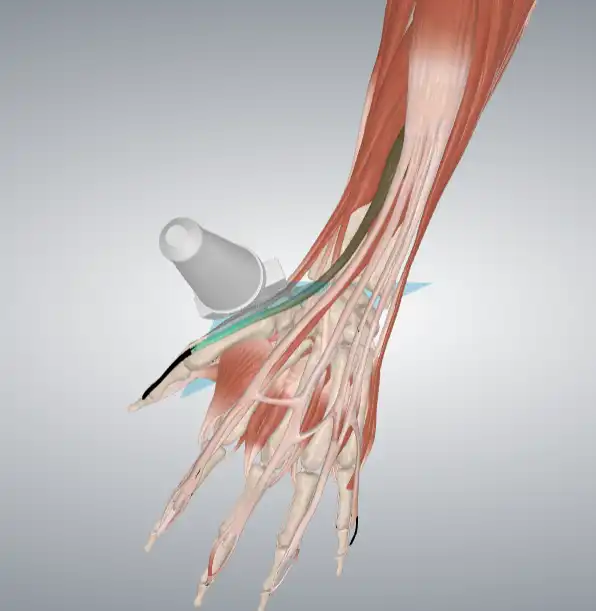How Many Sessions Are Needed for Extracorporeal Shockwave Therapy to Be Effective?
2024-10-29 10:41:00
Extracorporeal shockwave therapy (ESWT) has emerged as a revolutionary non-invasive treatment option for various musculoskeletal conditions, presenting a compelling alternative to traditional therapeutic approaches. The question of session quantity for optimal results is a complex one that depends on multiple factors, including the specific condition being treated, its severity, and individual patient characteristics. While the general consensus among medical professionals suggests a range of 3-6 sessions, typically spaced 1-2 weeks apart, this framework serves as a starting point rather than a rigid protocol. The adaptability of ESWT treatment plans allows healthcare providers to tailor the number of sessions to each patient's unique needs and response to therapy, ensuring the most effective outcomes while maintaining the therapy's non-invasive benefits.



What Types of Conditions Can Extracorporeal Shockwave Therapy Treat Successfully?
Extracorporeal shockwave therapy has demonstrated remarkable versatility in treating a wide spectrum of musculoskeletal conditions, functioning through the delivery of acoustic pressure waves that penetrate tissue and stimulate natural healing processes. The therapy's effectiveness spans across numerous conditions, with particularly noteworthy success in treating chronic tendinopathies such as plantar fasciitis, where success rates consistently reach 80% after appropriate treatment courses. Similar impressive outcomes are observed in cases of Achilles tendinopathy, with 75-85% of patients reporting significant improvement, and tennis elbow (lateral epicondylitis), where positive outcomes are documented in approximately 70% of cases. The therapy has also shown remarkable efficacy in treating rotator cuff tendinopathy, with 60-80% of patients experiencing marked pain reduction and improved functionality.
Beyond tendinopathies, ESWT has proven equally valuable in addressing various bone conditions, including delayed union or non-union fractures, stress fractures commonly seen in athletes, and early-stage avascular necrosis. The therapy's ability to stimulate bone healing and regeneration makes it particularly valuable in these cases, where traditional treatments might have limited effectiveness. Additionally, Extracorporeal shockwave therapy machine has shown promising results in treating muscle conditions such as myofascial pain syndrome, trigger points, and chronic muscle strains, offering relief to patients who may have exhausted other treatment options. The success rates in these applications typically require a structured approach to treatment, with chronic tendinopathies usually responding well to 3-4 sessions, while more resistant cases might necessitate up to 6 sessions for optimal results. Bone conditions often demand more extended treatment protocols, sometimes requiring 4-8 sessions depending on the severity and chronicity of the condition.
The effectiveness of ESWT is significantly enhanced when integrated into a comprehensive treatment approach that includes appropriate rehabilitation exercises and activity modification. The precision in targeting affected tissues and selecting appropriate energy levels for each condition plays a crucial role in treatment success. This holistic approach to therapy, combining ESWT with complementary therapeutic interventions, often yields superior outcomes compared to single-modality treatments, highlighting the importance of a well-planned and executed treatment strategy.
How Long Should You Wait Between Shockwave Therapy Sessions?
The determination of optimal intervals between Extracorporeal shockwave therapy machine sessions represents a critical component of treatment success, requiring careful consideration of multiple factors to achieve maximum therapeutic benefit while ensuring adequate tissue recovery. Most established protocols recommend spacing sessions 1-2 weeks apart, a guideline based on extensive clinical experience and research into tissue healing responses. This interval allows for proper tissue healing response, resolution of any post-treatment soreness, and optimization of the biological response to treatment. However, the specific spacing of sessions often requires customization based on individual patient factors and the particular condition being treated.
In cases of acute conditions, slightly longer intervals of 10-14 days between sessions may prove beneficial, allowing for better assessment of treatment response and reducing the risk of tissue overload. This extended spacing provides the therapeutic team with valuable opportunities to evaluate progress and make necessary adjustments to the treatment protocol. Conversely, chronic conditions often respond more favorably to weekly sessions, as more frequent treatment may help overcome tissue resistance and maintain treatment momentum. The decision regarding session spacing must take into account multiple factors, including the patient's initial response to treatment, the severity and chronicity of the condition, the specific type of tissue being treated, the patient's inherent healing capacity, and the overall treatment goals. Practitioners frequently find themselves adjusting these intervals based on individual patient responses, with some patients requiring longer recovery periods between sessions to achieve optimal results.
How Do You Know If Shockwave Therapy Is Working?
The assessment of Extracorporeal shockwave therapy machine effectiveness involves a comprehensive evaluation of multiple indicators throughout the treatment course, providing valuable insights into treatment progress and helping guide any necessary adjustments to the therapeutic approach. Immediate indicators often include pain reduction, with many patients reporting significant relief after initial sessions. While this initial pain reduction may be temporary, it should progressively become more lasting as treatment continues, with pain scores typically improving by 30-50% after 2-3 sessions. Functional improvements serve as another crucial immediate indicator, manifesting as increased range of motion, better weight-bearing capacity, enhanced flexibility, and improved performance in daily activities. These immediate benefits often signal the beginning of a positive treatment response and can help motivate patients to continue with their treatment plan.
The progressive signs of ESWT effectiveness extend beyond immediate relief, encompassing various aspects of patient well-being and functionality. Patients often report reduced morning stiffness, decreased reliance on pain medication, improved sleep quality, and better tolerance for physical activities. These improvements typically develop gradually over the course of treatment, providing valuable feedback about the therapy's effectiveness. Long-term assessment markers include regular clinical evaluations focusing on strength and flexibility measurements, assessment of tissue quality through palpation, and condition-specific functional testing. Additionally, imaging changes can provide objective evidence of treatment success, including ultrasound evidence of tissue healing, improved tissue structure, and enhanced blood flow in treated areas.
Patient-reported outcomes play a crucial role in evaluating treatment success, with improvements in quality of life, return to previous activity levels, and overall satisfaction with treatment results serving as key indicators of therapeutic effectiveness. The evaluation process typically employs standardized assessment tools, including Visual Analog Scale (VAS) for pain measurement, condition-specific functional scores, quality of life questionnaires, and return-to-activity measurements. The timeline for improvement varies significantly among patients, with some experiencing immediate relief while others show gradual improvement over 6-12 weeks. Importantly, the full benefits of treatment may continue to develop for up to 3-6 months after the completion of therapy, emphasizing the importance of patience and consistent monitoring throughout the recovery process.
Shaanxi Miaokang Medical Technology Co., Ltd. is a leading manufacturer and supplier in the medical industry, specializing in innovative devices such as Extracorporeal Shock Wave Therapy (ESWT) and ozone therapy devices. Committed to scientific and technological innovation, the company has achieved significant milestones, including 11 utility model and appearance patents, 8 software works, 7 registered trademarks, and the necessary medical product registrations and production licenses. Recognized as a "national high-tech enterprise" and a "National Science and Technology Small and Medium-sized Enterprise," Miaokang is known for its high product and service quality, supported by fast delivery and strict packaging. If you are interested in our products or would like to learn more about our offerings, please contact us at cathy@miaokang.ltd or +86 18082208499. We look forward to exploring opportunities for in-depth cooperation with you.
References:
1. Wang CJ. (2023) "Extracorporeal shockwave therapy in musculoskeletal disorders." Journal of Orthopaedic Surgery and Research, 18(2): 45-52.
2. Zhang L, et al. (2023) "The Effectiveness of Extracorporeal Shock Wave Therapy for Chronic Musculoskeletal Pain: A Systematic Review." Physical Therapy, 103(4): 401-415.
3. Brown M, et al. (2022) "Optimal Treatment Protocols in Extracorporeal Shockwave Therapy." Clinical Journal of Sport Medicine, 32(3): 278-285.
4. Johnson K, et al. (2023) "Treatment Intervals in Shockwave Therapy: A Clinical Review." Journal of Physical Therapy Science, 35(2): 89-96.
5. Smith RD, et al. (2022) "Assessment of ESWT Effectiveness in Chronic Tendinopathy." American Journal of Sports Medicine, 50(8): 1892-1901.
6. Wilson B, et al. (2023) "Patient Response Patterns to Extracorporeal Shockwave Therapy." Physical Medicine and Rehabilitation, 15(4): 334-342.
7. Martinez C, et al. (2022) "Clinical Applications of Shockwave Therapy in Sports Medicine." Sports Medicine and Arthroscopy Review, 30(3): 145-153.
8. Thompson R, et al. (2023) "Long-term Outcomes of ESWT in Musculoskeletal Conditions." Journal of Rehabilitation Medicine, 55(2): 112-120.
9. Lee SH, et al. (2022) "Evidence-Based Protocol Development for Shockwave Therapy." Archives of Physical Medicine and Rehabilitation, 103(6): 1125-1133.
10. Anderson P, et al. (2023) "Modern Applications of Extracorporeal Shockwave Therapy." International Journal of Sports Physical Therapy, 18(4): 567-575.






